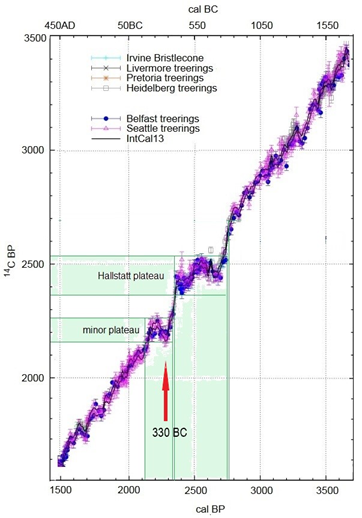In this brand-new article - the fourth in our Egyptian suite - we explore the papyrus archive from El Lahun using a strictly schematic Egyptian civil calendar and a modern astronomical date for the start of the calendar. This leads to the absolute accession years for three pharaohs of the Egyptian 12th dynasty. The accession years are compatible with recent radiocarbon dates for dynastic Egypt and are confirmed by all twenty-six moon dates with explicit regnal years, as well as by the Sothic date and an additional incomplete moon date included in the archive. Our investigation also sheds light on periods of co-regency, Egyptian practices of Sirius and moon observations, and the reliability of the Turin king list.
Monthly Archives: December 2022
Tree growth downturns in the Iron Age, Ragnarök and the Celtic expansion
We have published an extensive update to our old article with almost the same name, read here.
We postulate that - due to a dendrochronological error of 218 years - an extreme narrow ring event in Scandinavian pine tree-ring chronologies at -329 CE is contemporary with the “Hallstatt gap” in central European oak tree-ring chronologies. See also the termination of the work at the old Hallstatt salt mine which is dated on dendrochronological grounds around -570. Based on archaeological/radiocarbon evidence however, the Hallstatt settlement (its cemetery) was abandoned first around -350. This means that there are 220 years difference between the end dates at Hallstatt assessed with different dating methods, a stunning agreement with our postulated 218 years error.
We further postulate a large cosmic catastrophe with impacts distributed over north-western Europe as the cause for the -329 extreme narrow ring event which led to large scale deforestation and migration among the surviving people, the Celtic expansion.

We also postulate that the cosmic catastrophe, its prequel and its aftermath are visible in the radiocarbon calibration curve (INTCAL) as major anomalies in the 1st millennium BC.
